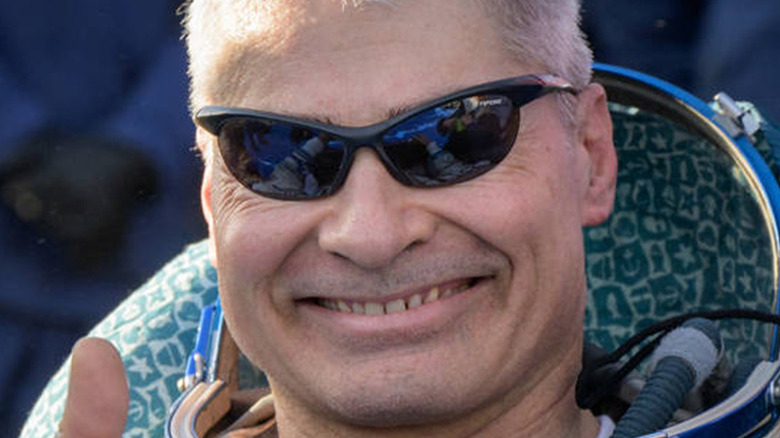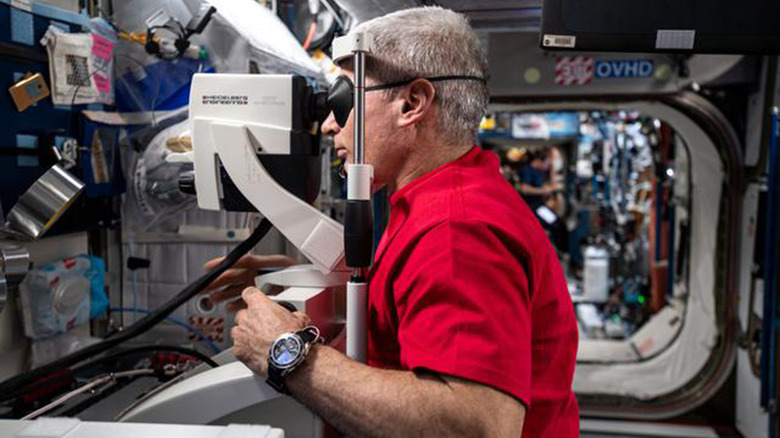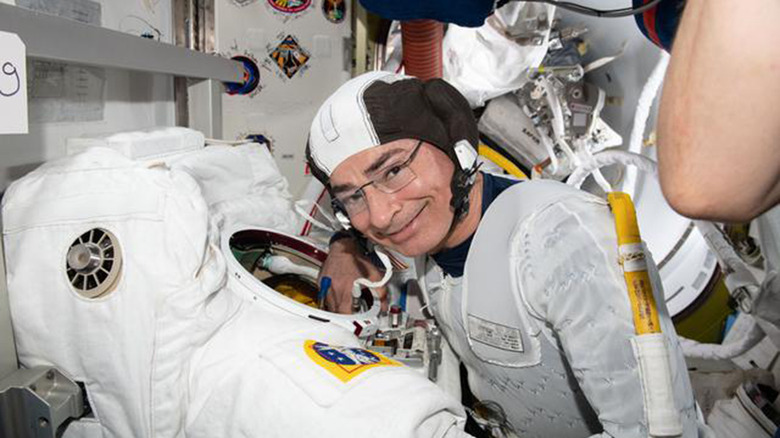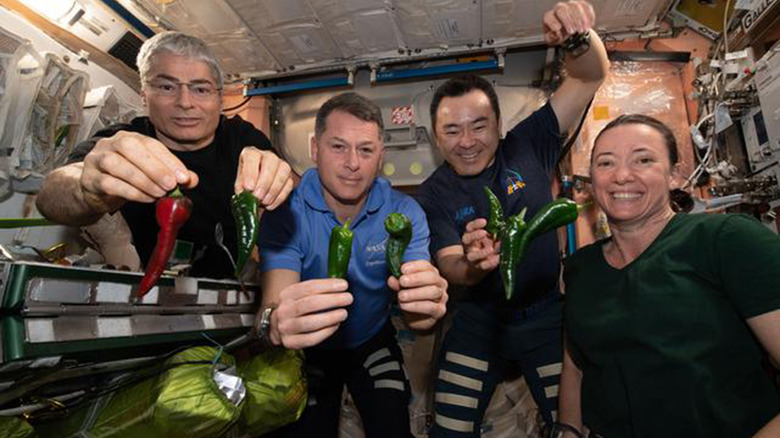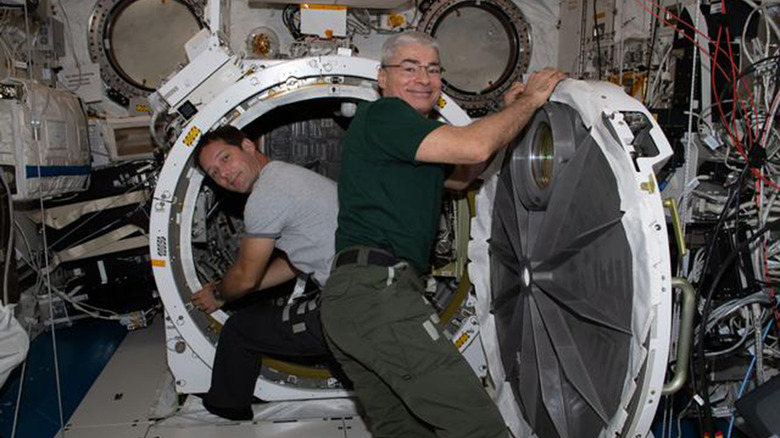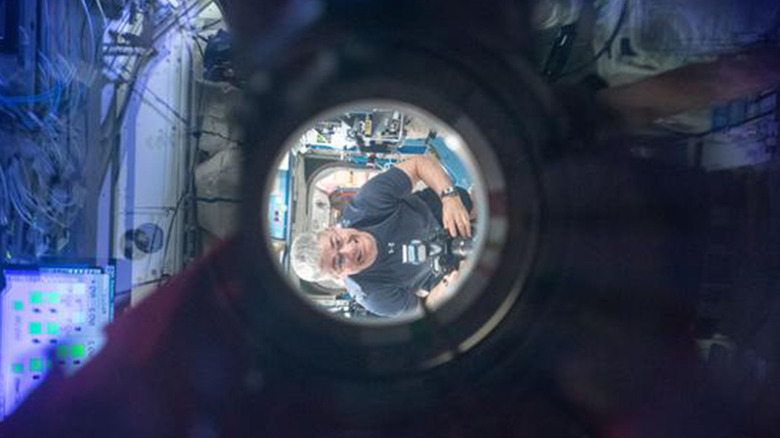What We Know About Astronaut Mark Vande Hei's Historic Spaceflight
We all know the names of the first astronauts to set foot on the Moon. Neil Armstrong and Buzz Aldrin made history with their journey. NASA has kept up the work of advancing space travel and the scientific research that entails. One such mission is that of astronaut Mark Vande Hei, who just completed a record-breaking trip on the International Space Station (via NASA).
Vande Hei returned to Earth March 30 after spending nearly a year in outer space, according to NASA. That's the longest-ever continuous spaceflight by an American astronaut, and NASA plans to use data from Vande Hei's trip to better understand the impact of long-term spaceflight on human bodies. According to NASA, that information can help to better prepare for trips to the moon and beyond — Mars is one of the goals. Vande Hei has now spent more than 500 days in space over the course of his career, according to NASA.
Studying space's impact on the human body
Mark Vande Hei spent 355 days in space on his last trip. During that time, NASA reports, he took part in regular scientific endeavors to gather data for future space exploration. Some of that research focused on what happens to the human body during extended spaceflight. NASA plans to use this information while developing its Artemis program, which aims to get humans back on the Moon, as well as programs that could bring the first humans to Mars.
Vande Hei examined things like the human immune system's ability to react to diseases in microgravity, as on the International Space Station, according to NASA. He also looked into muscle tissue deterioration and loss in space, known to astronauts as sarcopenia. Vande Hei's work included an early stage of testing on engineered cells to determine possible treatments. He also took part in regular health tests to determine the impact of extended spaceflight on his own biology, according to NASA.
Discovering more about the environment
The International Space Station has been the site of more than its fair share of scientific experiments. NASA reports that in its more than 20 years of operation, nearly 250 astronauts have spent time aboard and taken part in almost 3,000 research projects. But we still have a lot to learn about how everything works in microgravity. During Mark Vande Hei's record-breaking spaceflight, he didn't just study human health. He also looked at how basic elements of life on Earth would work in space.
Part of that research, according to NASA, included advancing techniques of fire safety aboard the space station. The goal is to figure out the best ways to extinguish fires when they happen in space and figure out the best materials to avoid fires in the first place. But that's not all. Vande Hei also studied the differences in how water boils and how bubbles form in microgravity, with a focus on heat management that could aid in creating vehicles and even habitats on other planets. In addition, he worked to improve the ISS toilets.
A well-balanced diet
If you've ever read "The Martian" — or seen the movie adaptation — you know one of the most valuable things for living in space is being able to grow food. There aren't any orchards or gardens on Mars, so being able to find a sustainable and long-term source of food is an important part of extending our stays in outer space. While astronaut Mark Vande Hei was on the International Space Station, the crew made some headway in figuring out how to provide fresh food for astronauts over time.
Vande Hei was present on the ISS for the first-ever harvest of chile peppers grown in space, according to NASA. He even stuck around to see the second harvest later. Studies of plant growth examine the way that plants form their roots and leaves in microgravity, as well as any genetic changes that might be taking place. The astronauts were able to eat the peppers they grew, so they must have turned out okay.
Modifying the International Space Station
The International Space Station has been in low Earth orbit for more than 20 years, but there's still plenty of work to be done to keep up with the needs of the astronauts and their research. Astronaut Mark Vande Hei worked to install new systems and technology that could improve data collection during his 355 days onboard the ISS, according to NASA.
While he was there, Vande Hei helped to install a third solar array that can help power the ISS. That technology will help to figure out the best ways to power future NASA projects. Vande Hei worked with other astronauts to install a platform on the outside of the ISS which will allow for more research of the environment of space itself. The platform gives astronauts the ability to put objects in the harsh vacuum of space and see the effects, NASA reports, furthering our understanding of how to interact with it.
The long trip home
Astronaut Mark Vande Hei's days in space were clearly pretty busy. According to NASA, his 355 days on the International Space Station allowed him to complete almost 3,700 orbits around our planet — a distance of about 150 million miles. But his return trip to Earth was noteworthy for another reason entirely. As Russia continues its war against Ukraine and international tensions are on the rise, Vande Hei made his return trip in the company of two Russian astronauts (via NASA).
Despite the current global conversations about Russia's political intentions, NASA says it's continuing to work closely with Russia's own space agency, according to The Verge. A spoof video suggested that the Russian agency might leave Vande Hei stranded onboard the ISS, The Verge reported, but the video was later declared a joke and Vande Hei was brought back safely. Following the landing, NASA says he's undergoing medical checks and will make his way to a "recovery staging city" aboard Russian helicopters. There a NASA jet will pick him up for the trip to Houston, Texas.
